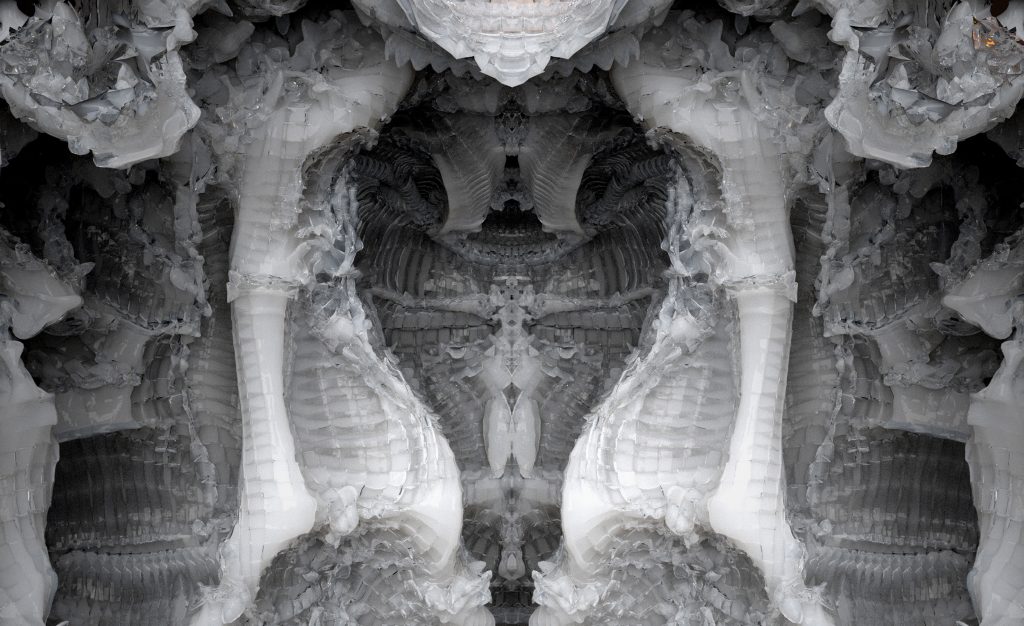
Link: https://www.michael-hansmeyer.com/zauberfloete
[OLD SEMESTER] 15-104 • Introduction to Computing for Creative Practice
Professor Tom Cortina • Fall 2021 • Introduction to Computing for Creative Practice

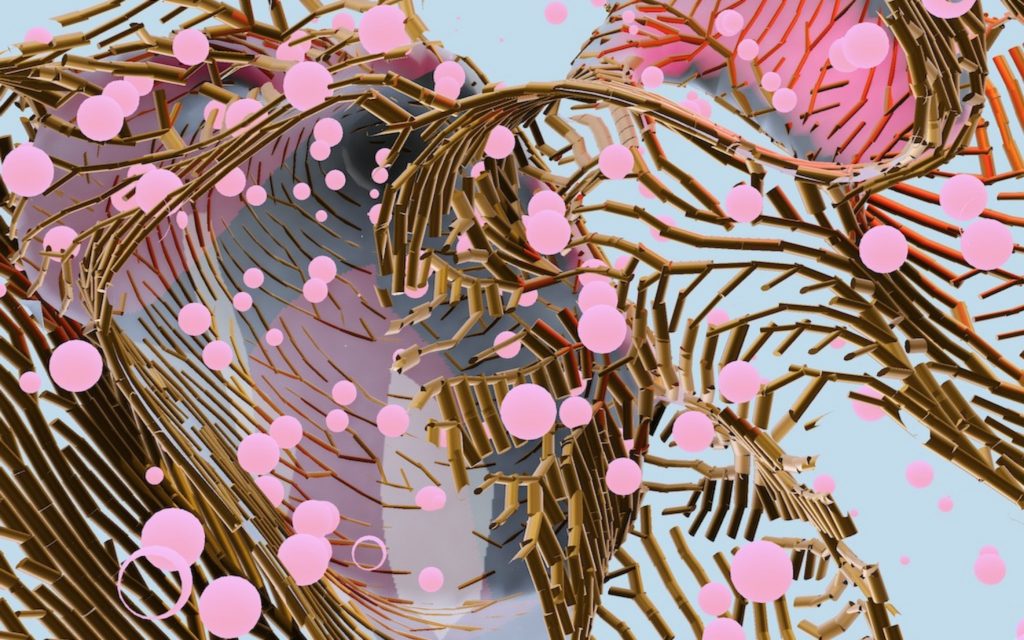
The work that I really liked was by Marcin Ignac. His work. ‘Coral Moss’ was the one that caught my eye. I really enjoy the idea of the Generative Growth that he embeds in this experiment. I feel that the colour scheme is really organics and gives the art very impressive flowing nature. Even though there is no set form or structure to the art, the simulation still seems very cohesive and I really appreciate that. The artist has used technologies like glsl, webgl, javascript, pex and nodes to create this real time simulation. As seen on their page, the artist explains that he merges, “reaction diffusion used to The artist strongly believes that data is not just numbers and is in fact a tool for art. He believes that data can be turned into Technology mediated creativity. This can be seen in his work as he uses algorithms to create something really beautiful.
http://marcinignac.com/experiments/codevember18-02-coral-moss/
The specific artwork that I am inspired by is “Timelapse” (2021) by Katherine Frazer. She has many fun and iterative art pieces but one specifically felt very fun and vibrant to me especially after a dull day.

From what I learned in an interview, Ms. Frazer enjoys to build upon her work in a sequential process of layering and allowing for changes happening on the go, which causes her to base a lot of decisions on intuition.
After learning this, I could see it very distinctly in her work, and it made me enjoy it more. I feel like art is often very intriguing and powerful when it flows naturally. It feels freeing to look at. I also greatly respect Ms.Frazer for embracing a process many get scared by or don’t believe in.
Lastly, I love the colors and flowers in this piece. It adds to the wildness while also not covering up the careful generative layering process.
Overall, it is simple but very intricate and I think that is a great take on generative art.
link to artwork and interview here
Link: http://www.lumicon.de/wp
One artist I was really drawn to was Holger Lippman. I found his work really interesting because he was able to use coding to create these pieces that replicated a style similar to post-impressionism. Generating these images that are unique each time is something pretty incredible. Being able to replicate paint strokes really creates this cool effect. One piece of his in particular, “noise warp” reminds me a lot of Van Gogh’s style and specifically Starry Night. In some of the other series you can see inspiration from Monet and other famous artists. I also really liked another one of his pieces called, “ripple” using the curveVertex function. I experimented with that function in my project and it’s cool to see how complex it can actually get to create these really complex shapes and patterns. Overall and through creating one of these projects myself, it takes some problem solving and trial and error to find what you’re looking for. On my project I was actually surprised at what I found by mistake and it influenced some of my design ideas.
Project Title: Ten Thousand Cents
Year of Creation: 2008
Artists: Aaron Koblin and Takashi Kawashima

Koblin’s artistic sensibilities manifest in the algorithm or more so through the resources used, such as Mechanical Turk; many of Koblin’s projects depend on collective effort, so it makes sense that the tech used works with/is for community driven stories. I admire how the project represents that despite being separated, people are able to stay connected through technology and work together to build something. This message inspires me because it makes me feel a bit less dissociated from the rest of the world. I admire how when looking at each individual part, it’s hard to understand what’s occurring or what the goal is, but when you view the bigger picture it is very clear. I find this admirable because it reminds me to step back and look for the real reasons behind why I do what I do in my everyday life. I know that the work was generated using a “custom drawing tool.” The interfaces were done with Flash and they also used Processing. As likely intended by the creators, the project suggests the possibilities for telling meaningful stories through interfaces, especially as we collect more personally relevant data.
John Henley; 15-104 section D
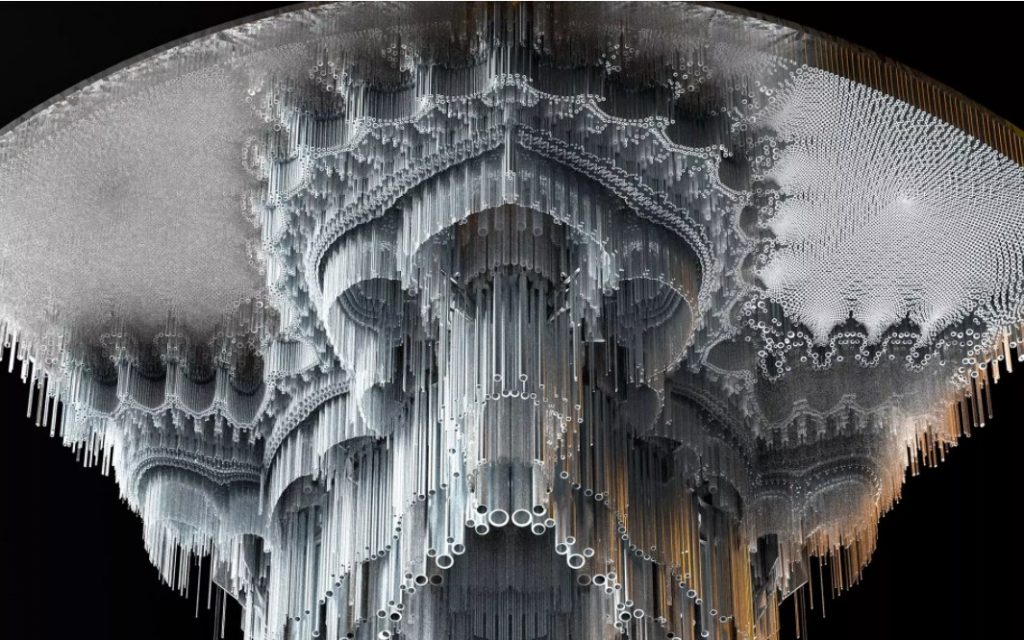
https://www.michael-hansmeyer.com/muqarnas
I examined Muqurnas by the computational architect Michael Hansmeyer. Murquanas are complex ornamental ceiling vaultings that provide an expansive and vast vaulted experience for viewers to explore above them. I find these renderings to be simply beautiful–they add an element of design surprise in the form of grandiose and nearly magical experiental environment design. Hansmeyer explains how his works combine “architecture, mathematics, and art to form highly intricate and complex stalactite structures.” He creates his rules for these computational renderings based on size, material, and form of the ceiling under question. Hansmeyer’s portfolio emphasizes the questioning of designing using open-ended algorithms, and this questioning is exhibited in his work. His pieces are expansive and clearly have the quality of intentional randomness, allowing the computer to explore form and beauty in a new way.
A generative art project that I really admire is one by Leonardo Solaas called “Walking in Color Space”. With this project, he has taken famous art pieces, such as the Mona Lisa and has used code in order to create a 3D axis in which the most dominant colors in the piece are displayed. It breaks down exactly what colors are in the piece, and at what magnitude. Generative art allows people to create code that then creates art or produces ideas within seconds. I believe that for this specific project, Solaas must have used code which programs the computer to identify the colors within an artwork, and uses a scale or range to display how often colors are shown or used in a piece. The axis also produces a shape in which the colors occur. Along with the colors and the magnitude, they also show the position of the colors on the piece, created another piece of art itself, which I think is remarkable, as it does both analyze art while creating art at the same time.

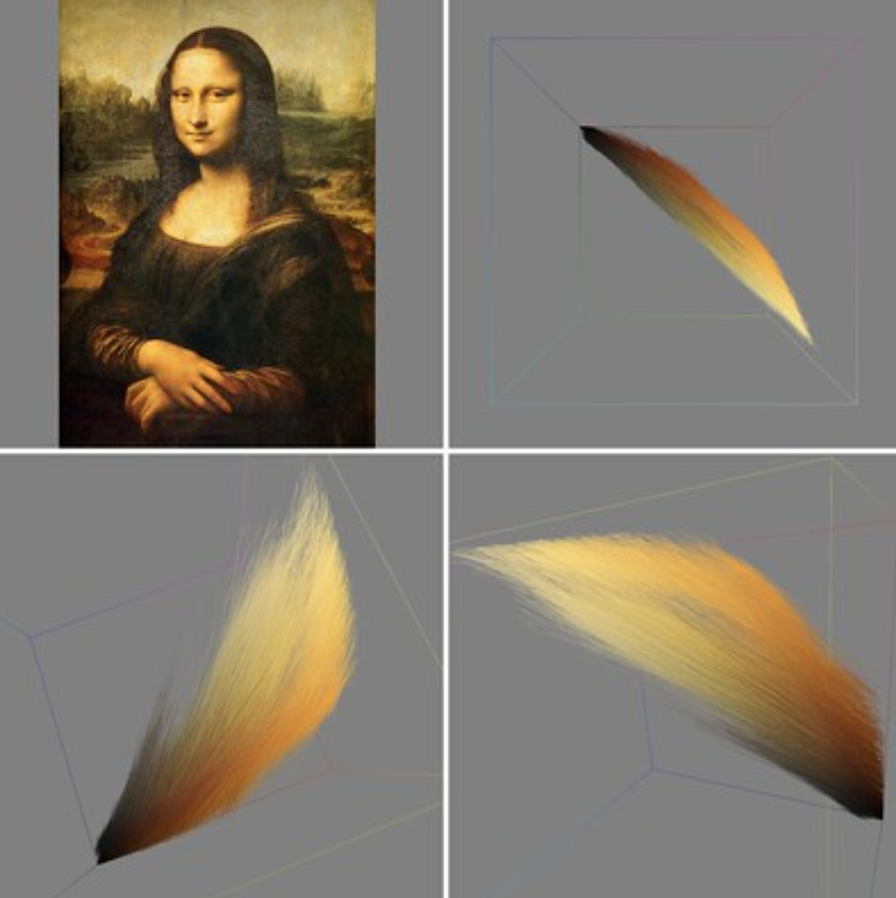
I admire this project because of the depths and detail it contains with the use of only one color and shape. The number of layers that this project has creates the sense of depths and shades of red because of the overlap of different red circles. She used generative and computational systems, and her primary material is coding. She also likes to combine the use of traditional art with the aesthetics of algorithms and thinks the translation between art and coding is like a conversation. Her fluid concepts against the formal written coding to generate the precise images are repeated until she is satisfied with the final artwork. In her conceptual art, she likes to characterize it with minimalist and simple qualities like the many red circles that are layered over and over again in this artwork. She likes to focus on the translation of her conceptual thoughts and creativity through computations to create the abstract forms, movements, and colors in many of her artworks.
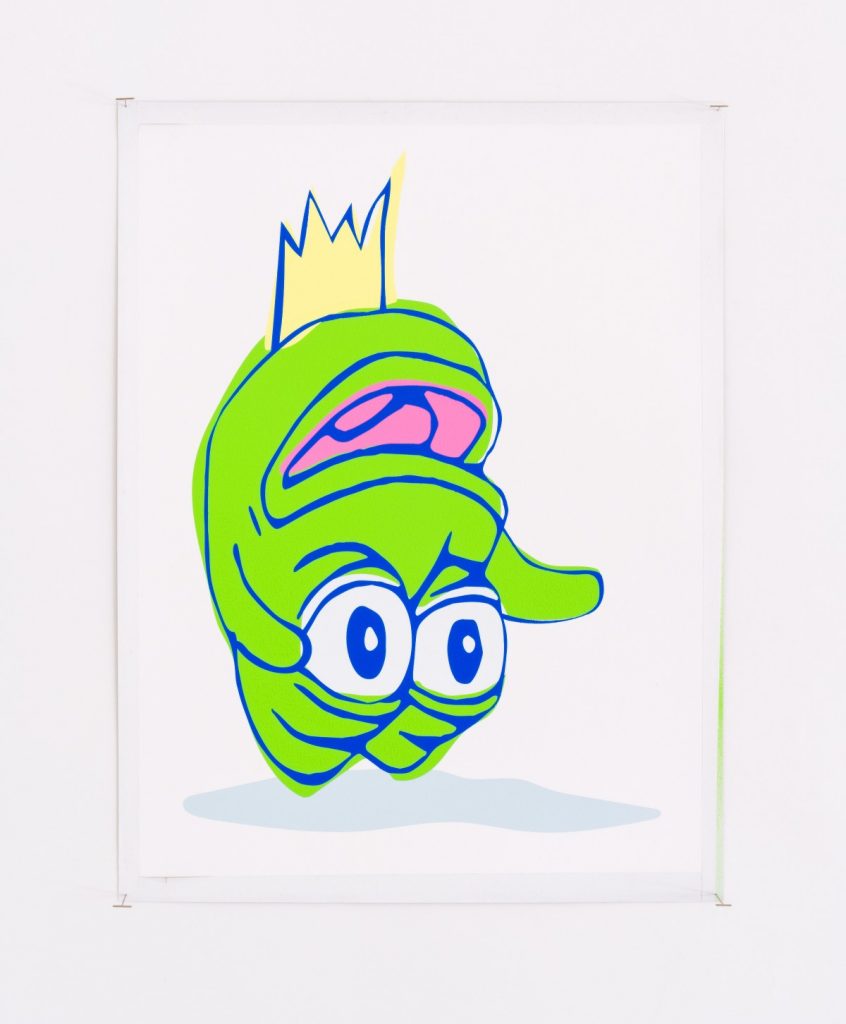
The Piece of Generative Art that I found to be inspirational and admirable was Moka’s Froschkonig (Frog Prince), made in 2020.
Moka, as known as Matthias Dorfelt, was born in the city of Hamburg, Germany in 1987. However, he earned his Master of Fine Arts from the University of California in Los Angeles and also bases himself there. His art also ranges from human-like doodles to pixel work.
I found this particular piece to be particularly amusing, interesting, and inspiring. I like the character of Pepe, whom I find humorous, and to find him drawn this way, through computer algorithms, has caused me to rethink Generative Art as a whole.
The Piece is very human-like. If I had not known that it was generated, I would have considered it a well-done painting.
However, now that I know, I am astounded and am considering going further into Generative Art on my own. As for the Artwork itself, Moka did not reveal or speak about how he made it. His want of his work being playful and humorous shows through in this piece though. To conclude, Moka’s Piece and other work has made me change my view of Generative Art and has made me interested in the medium as a whole now.
Links for his Website, the Specific Piece (scroll until you see it), and Moka’s Background.
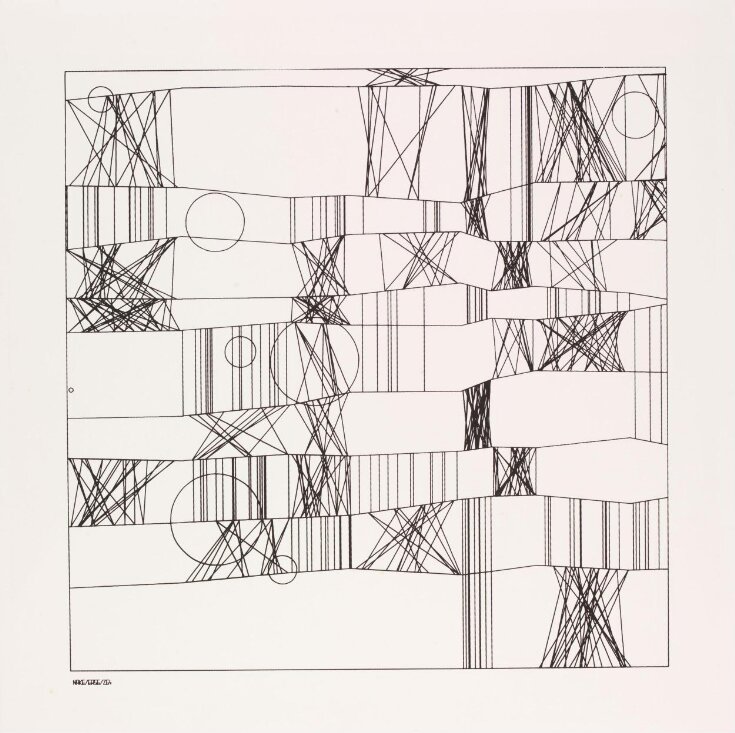
“Hommage à Paul Klee”, Frieder Nake, 1965
Something in particular that I enjoy about this project is the fact that while from far away, it looks like a hand-drawn drawing, when you look more closely, the generated aspect is apparent in the perfectly straight lines and perfect ellipses– blending those generative codes to create something that mimics that of a human hand, and pointing to the human art artistic thought that went into the code itself. On a website, I actually found a list of some of the variables that Nake coded to determine the generative code: the width of the horizontal lines, the amount, radius, and position of the circles, whether a quadrilateral is to be left empty, or filled by vertical or triangular lines, and more. Although the art is technically generated by code, the artwork still innately reflects Nake’s own artistic sensibilities in that it reveals his style of drawing, what kind of a drawing he is trying to create with the code, and which variables he determined to create these artworks he calls his own.